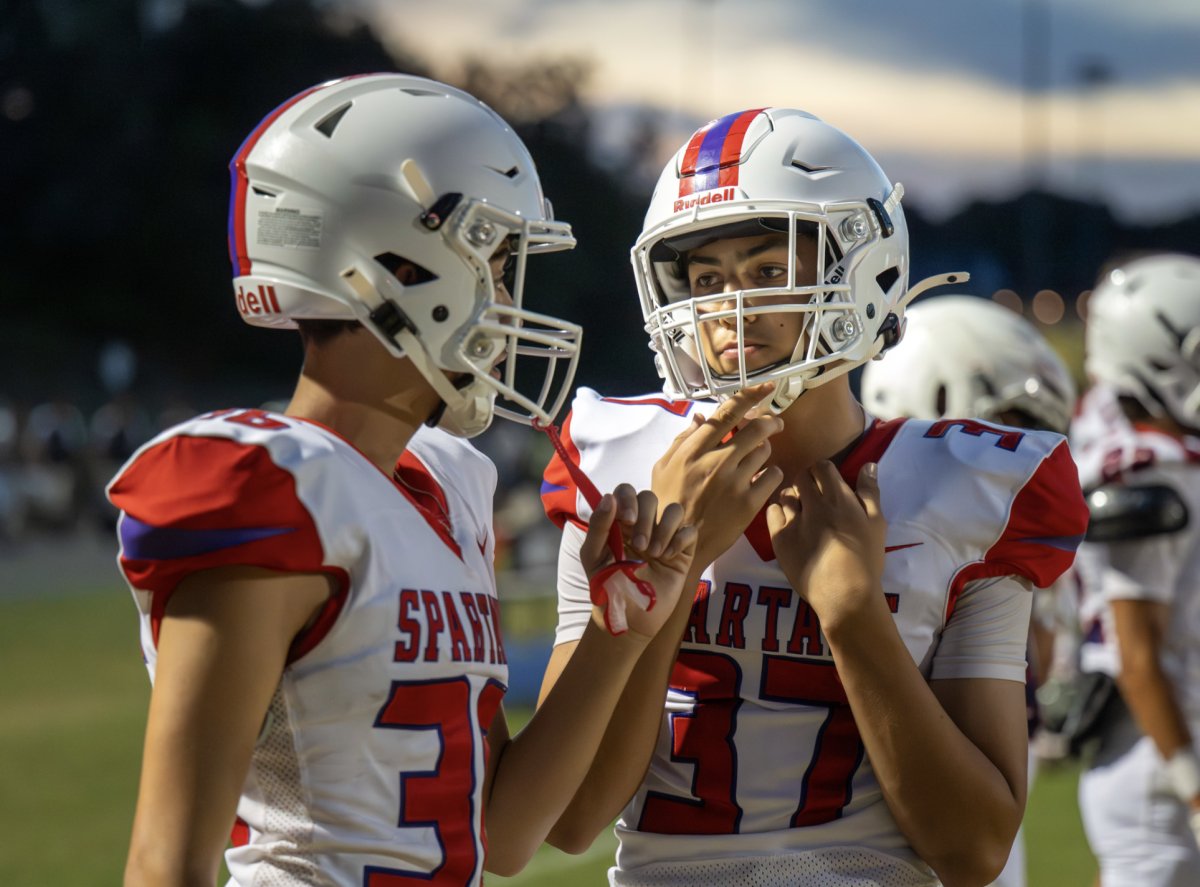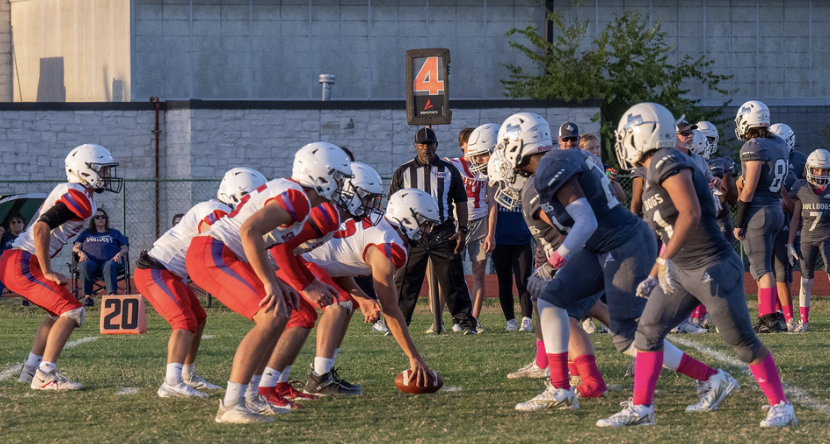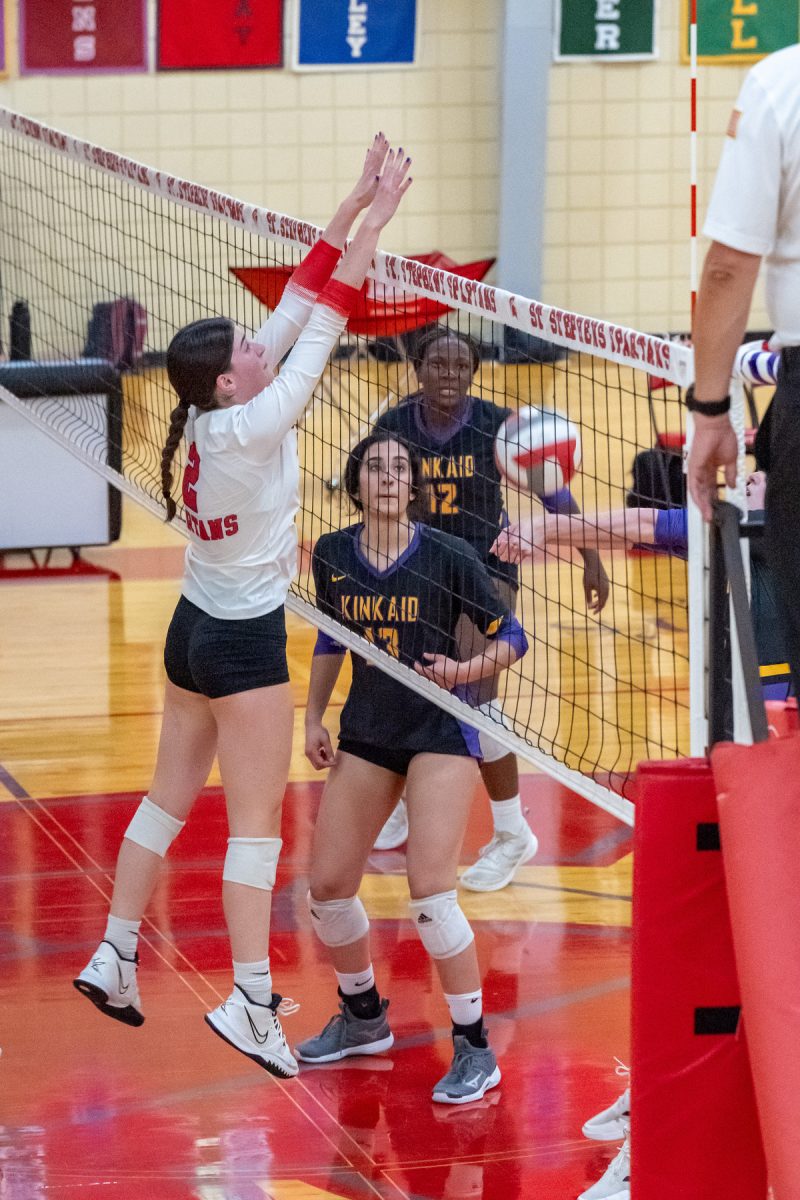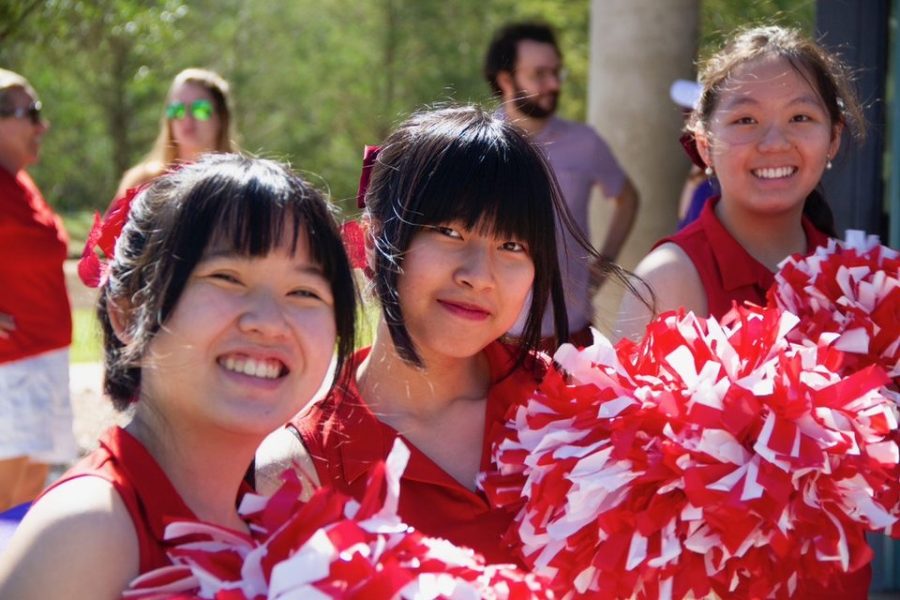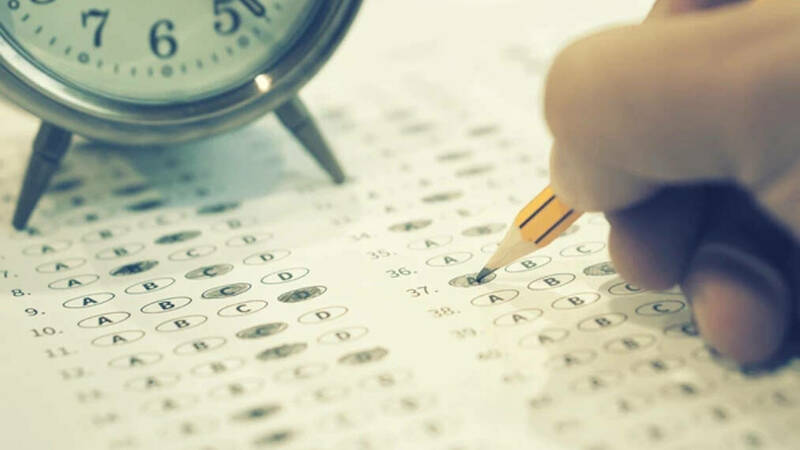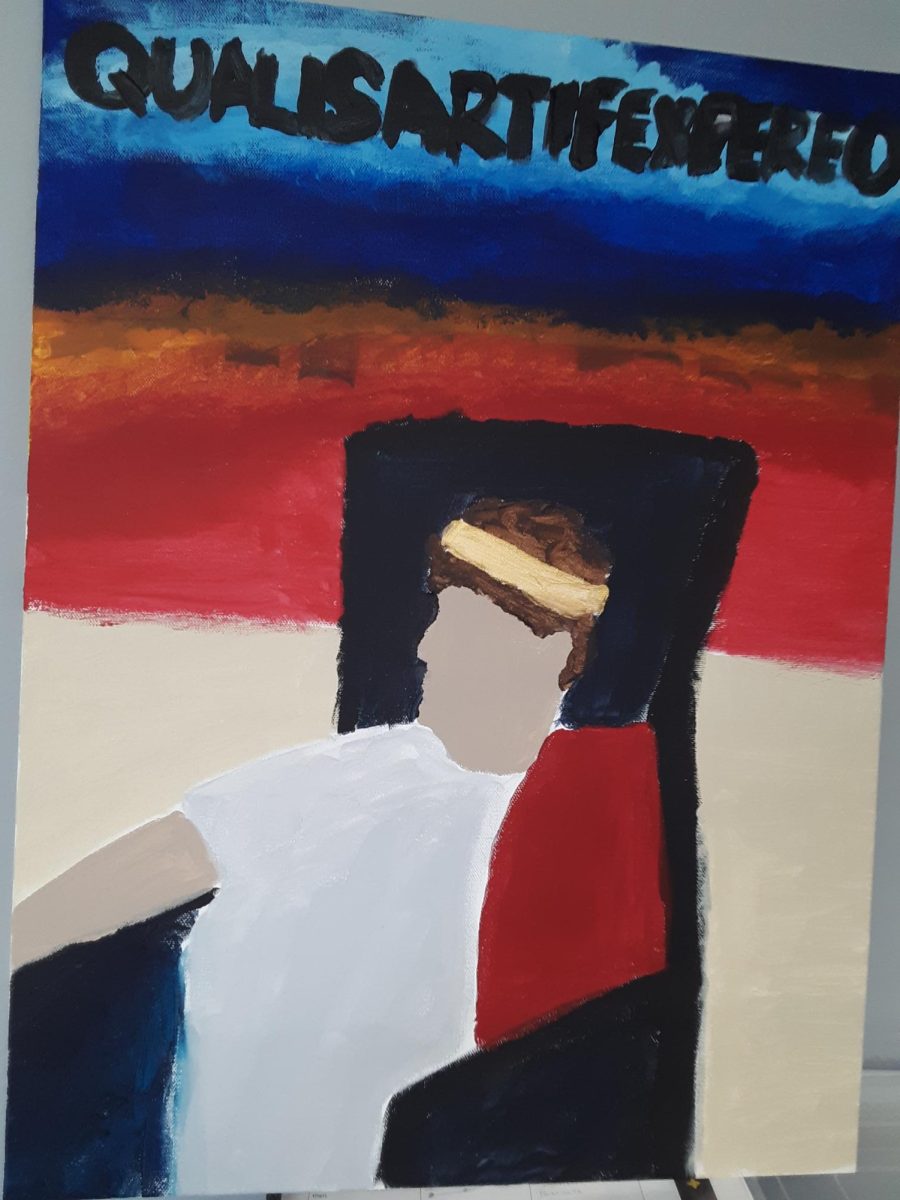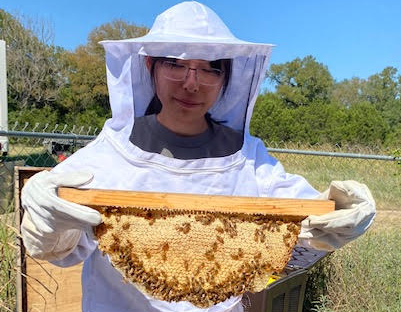With bated breath, the dancers line up on the floor in their formation, waiting for the familiar cue.
Five, six, seven, eight! Ms. Fullylove ‘11, Chrysalis Dance Company alum and interim artistic director, turns on the music, and the girls come alive. With fast, energetic movements, they form with their bodies a series of steps that Chrysalis dancer Linki Zhao ‘26 ascends before standing up, turning back, and placing the ultimate trust in her team members. Hands folded on her chest, she falls, and her teammates catch her in midair before setting her on the floor. But there’s no time to waste — the dancers immediately transform themselves into a pyramid formation, right as the song reaches its first crescendo. As if they are one with the music, the dancers come alive, and let the energy flare through their movements as they begin to tell a story without words. And it’s not easy: every “one more time” will be many, many more times in order to get every detail down to perfection.

The strenuous demands of dancing with a team is a challenge as much as it is rewarding. Chrysalis dancer Lily McKay ‘28 sees these long rehearsals as “a wonderful chance to grow as a person, performer, and athlete. It pushes me to work harder because although I have a whole team of people, my part is just as important. I push myself and practice because that is the best way for me to support my team. Additionally, I’m not doing any of it alone, I get to spend my practices talking to people and socializing.”
However, despite the physical demands, narrowing down of details to perfection, and dedication dance requires, its status as a sport is still largely questioned by society. Though dance at St. Stephen’s can qualify as either a fitness or fine art credit for Upper School students, its reputation has yet to also be the same. Many Chrysalis dancers often recount hearing “No, but what SPORT do you do?”, and that Chrysalis’s non-competitive status reduces its legitimacy as a sport.
First of all… there are other non-competitive, recreational sports on campus! And they are sports as much as anything else.
Next, let’s define what a sport is: “an athletic activity requiring skill or physical prowess and often a competitive nature” (Dictionary.com) where “an individual or team competes against another or others for entertainment” (Oxford Languages).
It’s just like other athletics — even if the competition is not against other people, it’s also (and even fundamentally) against yourself, where you push the boundaries of your body’s abilities to move in physically demanding, challenging ways. The physical requirements and emphasis on movement types vary by genre. Ballet, a style providing the crucial technical base for any kind of dance, uniquely weaves together both flexibility, balance, and strength. It’s more than just lifting your leg all the way up to the side of your face. How do you hold the position? Extend the lines of your body as far and as long as you can? You need to hold in your abdominals and obliques to keep your torso balanced above your supporting leg. The glutes and inner thighs must work together to rotate the turnout of your legs as far out as possible, a pose unnatural to the human body requiring lots of extra conditioning exercises to master. The arms cannot droop, and must be held up in a lovely, soft arc. But the easier and more delicate it looks, the harder it is: the back muscles keep the arms lifted to conceal any appearance of tension out of the arms themselves. Don’t forget to smile! Breathe through the strain. Lift your chin, lengthen your neck, hold up your chest while softening it. No one can know how hard these simple-looking movements can be — this is where dance gets its edge over others in difficulty.

Try it yourself — and don’t get hurt. It’s difficult to remember all of these nitpicky technical details in your brain and execute them all at once. But the more of them you can harness simultaneously, the better you can perform. Like other sports, there is still a set of physical criteria that can determine a winner in a dance competition. A clean finish from a pirouette is scored just like a goal in soccer. And to be strong enough to do it, you have to take care of your body to be in prime condition, just like any other athlete. “It requires peak fitness, immense coordination, and body awareness at the cellular level. Yes, we need strength and flexibility to turn, leap, balance, and execute floor work,” says Ms. Alonzo-Hansen, the Director of St. Stephen’s Dance Department. “The effort that goes into being a dancer can often be overlooked,” notes Lily. Her training regimen consists of “weightlifting 4 times a week, stretch for at least 2 hours a day, and have roughly 16 hours of dance a week. I push myself both mentally and physically, and although it may not be face to face competition, we are working our butts off to perform the best we can as an individual and as a group.”

Even though there are difficult techniques requiring much athleticism to master, dance does not lose touch with its role as art: “the expression or application of human creative skill and imagination, typically in a visual form… producing works to be appreciated primarily for their beauty or emotional power” (Oxford Languages).
Dance can tell a story as much as it can simply translate music into movement, weaving in emotions or ideas into the movement style or other visual elements (costuming, staging, etc). Swan Lake, classical ballet’s crown jewel, follows the tragic love story of doomed-to-be-swan Odette and Prince Siegfried explicitly through its movement and costuming. In Act II, the lovers perform a pas de deux (duet) where Odette tells Siegfried of the sorcerer’s curse and the only way to escape it: if someone who has never been loved before swears to love her forever. Siegfried pledges his devotion to her, and she begins to trust him, conveyed by letting go of his hand as she balances in a developpé devant en pointe, falling backwards in a lovely cambré as he catches her.

On the other hand, George Balanchine’s Walpurgisnacht makes no reference to the legend its score is named after. The revolutionary choreographer and New York City Ballet founder sought to simply personify the music through the dancers. Dressed in long skirts and with rebelliously free-flowing hair, the dancers match every beat of the music flawlessly to seamlessly blend sound and movement together. An exceptionally skilled choreographer with an acute knowledge of music, many dancers recall Balanchine simply looking at a score and creating movements on the spot to match its tempo and express its joyful spirit.

The Chrysalis dancers are no exception, also tapping into the headspace of another character or feeling to match the story behind their choreography and music. Blending the artistic and athletic, Ms. Alonzo-Hansen notes that “we also need to access our spirits and internal rhythms to move our bodies with precision and nuance” in order to “tell stories, touch hearts, and bring our audiences a sense of awe, joy, and contemplation.“

As much as dancers strive to emphasize the athleticism needed to meet the demands of their craft, it’s important to understand that dance should not be confined to a single label. Its dual nature as a sport and an art form raises a big question — how do we work as a group to personify the music or tell a story with movement, and conceal the grueling strength it takes to carry us through it all? Take a dance class. Come by and watch the Chrysalis dancers perform at our show in January. It’s never too late to gain an appreciation for something as unique and boundary-breaking as dance!


